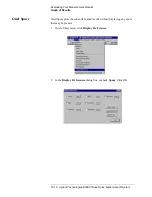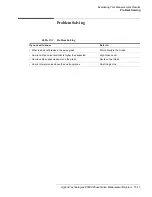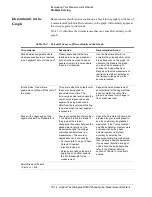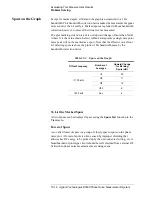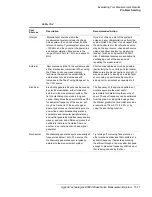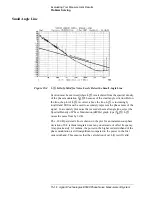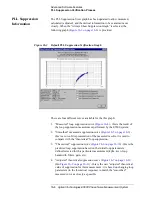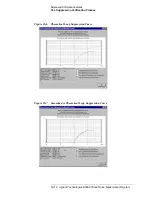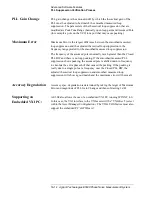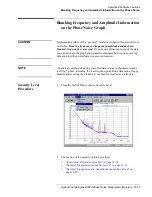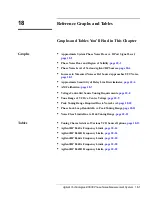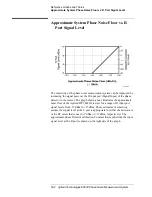
16-4
Agilent Technologies E5500 Phase Noise Measurement System
Advanced Software Features
Phase Lock Loop Suppression
MAX ERROR:
This is the measured error that still exists between the the measured Loop
Suppression and the Adjusted Theoretical Loop Suppression. The four
points on the Loop Suppression graph marked with arrows (ranging from the
peak down to approximately ––8 dB) are the points over which the
Maximum Error is determined. An error of greater than 1 dB results in an
accuracy degradation.
CLOSED PLL BW:
This is the predicted Phase Lock Loop Bandwidth for the measurement. The
predicted PLL BW is based on the predicted PTR. The Closed PLL BW will
not be adjusted as a result of an accuracy degradation. If an accuracy
degradation is detected, the amount of error is determined from either the
PLL Gain Change or the Maximum Error, which ever is larger. The
degradation itself is 1 dB less than the greater of these.
PEAK TUNE RANGE:
This is the Peak Tuning Range (PTR) for the measurement determined from
the VCO Tune Constant and the Tune Range of VCO. This is the key
parameter in determining the PLL properties, the Drift Tracking Range, and
the ability to phase lock sources with high close in noise.
The PTR displayed should be approximately equal to the product of the
VCO Tune Constant times the Tune Range of VCO. This is not the case
when a significant accuracy degradation is detected (4 dB) by the Loop
Suppression Verification. In this case, the PTR and Assumed Pole are
adjusted when fitting the Theoretical Loop Suppression to the smoothed
measured Loop Suppression, and the test system will display the adjusted
PTR. If the PTR must be adjusted by more than 1 dB, as indicated by an
accuracy degradation of greater than 0 dB, the Phase Detector Constant or
the VCO Tune Constant is in error at frequency offsets near the PLL BW, or
the PLL BW is being affected by some other problem such as injection
locking.
ASSUMED POLE:
This is the frequency of the Assumed Pole required to adjust the Theoretical
Loop suppression to match the smoothed measured Loop suppression. The
Assumed Pole frequency is normally much greater than the Closed PLL
BW. An Assumed Pole frequency of less than 10 X PLL BW is an indication
of peaking on the PLL Suppression curve. For PLL BWs less than 20 kHz,
an Assumed Pole of less than 10 X PLL BW indicates a delay or phase shift
in the VCO Tune Port. For PLL BWs greater than 20 kHz, the Assumed Pole
may be adjusted to less than 10 X PLL BW to account for phase shifts in the
test set.



